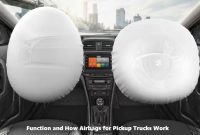Parallel parking is often a challenge for many drivers. Especially in limited areas or when having to park a vehicle between two cars. In addition to requiring special skills, this type of parking often triggers anxiety for those who are less experienced. To overcome this, automotive technology introduces the automatic parallel parking feature.
This feature not only provides comfort, but also increases safety. By minimizing the potential for accidents due to driver error when parking. So, how does this technology work? Let’s discuss further.

Understanding the Automatic Parallel Parking Feature
As the name implies, this is a feature on modern vehicles that allows cars to park themselves automatically. Automatic parallel parking feature uses various sophisticated technologies to facilitate the parking process.
One of them is an ultrasonic sensor. This sensor is installed on the front and rear bumpers of the car. They function to measure the distance between the car and objects or other vehicles around it. This sensor is also useful in detecting sufficient parking space for vehicles.
In addition to ultrasonic sensors, some cars are also equipped with 360-degree cameras. Its function is to provide a clearer visual view of the area around the car. At the same time, it allows the system to monitor or process parking spaces more accurately. Rear cameras, for example, help drivers see the area behind the vehicle to ensure there are no obstacles that could cause an accident.
Another technology is steering control. After the driver selects the desired parking space and activates the feature, the system will take over the steering wheel. Then direct it automatically to enter it with precision. Sometimes there are also transmission settings to automatically reverse or advance when parking.
How it Works
To really understand how the automatic parallel parking feature works, we can see it on the MyCarDoesWhat YouTube channel. Where it will work in several stages that are very easy for drivers. Here’s the explanation:
1. Detecting
The driver activates the parallel parking feature and moves the car until it is near an empty space. The sensors around the vehicle will detect sufficient parking space. Then signal the driver if the space can be used for parking.
2. Selecting Space
After the parking space is detected, the driver will receive instructions via the information screen in the vehicle. The driver can choose to continue automatic parking by pressing a button or confirming the selection.
3. Taking Over Automatic Steering
After the driver confirms, the system will take over steering control. Starting from moving the vehicle to enter the parking space. This process can involve moving forward or backward several times until the vehicle is in the right position.
4. Transmission and Braking Settings
During the parking process, the system will also adjust the vehicle’s transmission to automatically move the car forward or backward. The driver only needs to keep his foot on the brake pedal to ensure that the vehicle does not move while the system is working.
5. Parking Complete
After the vehicle is successfully parked, the system will notify the driver that parking is complete. The driver can remove his foot from the brake pedal and turn off the engine.
What Should the Driver Do?
Although this system is designed to make it easier for the driver, there are still some things that need to be done. One of them is if you feel something is wrong or the situation is unsafe, the driver can stop the parking process. The way to do this is by pressing the brake pedal or a certain button on the vehicle.
Overall, the automatic parallel parking feature makes the parking process safer. Especially for drivers who are not used to parallel parking. This safety feature not only provides comfort but also increases efficiency in the use of limited parking space in big cities.



